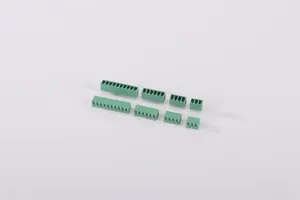
12 Inch Duct 5m Or 10m Stock Available Fire Resistant Air Ventilation PVC Flex Duct


Splitter Modular Pitch 3.5mm 3.81mm Dust Cover Housing Pa66 Wire Board Plug Direction Terminal Block























A duct board is an insulated board used in the construction of heating, ventilation, and air conditioning (HVAC) duct systems. A duct board prevents heat gain or loss as air passes through the system by providing thermal insulation to ductwork.
An air duct board, especially those crafted from fiberglass, has distinctive features that contribute to its widespread usage in thermal insulation. The material helps reduce heat transfer so that conditioned air keeps the desired temperature as it travels through the duct system. Equipped with a foil-facing material, an air duct board also functions as a vapor barrier to safeguard against external elements. Fiberglass duct board is lightweight and pliable, making it possible to fit various duct configurations. By preventing moisture absorption, fiberglass duct board minimizes mold growth, which can affect structural integrity and the quality of indoor air.
Widely used in residential and commercial HVAC systems, duct boards contribute to energy efficiency and thermal management. A duct board machine facilitates the production of duct boards. The process of shaping may involve the use of an extruder that forces the fiberglass mixture through a shaping die to form a continuous sheet of material of varying thicknesses. A curing or setting process is what hardens and gives the duct board its structural integrity. Some machines can also apply a protective facing material to one or both sides of the board. Duct board sheets are easily cut and shaped using fiberglass duct board tools to accommodate diverse building layouts.
There are numerous advantages associated with the use of duct boards in the context of HVAC systems. In residential settings, the material is used in constructing ductwork that distributes heated or cooled air throughout the home. In commercial buildings, fiberglass duct board serves a similar purpose as an integral part of sophisticated HVAC systems. An air conditioning duct board or insulation duct board forms a barrier against heat transfer within air conditioning duct systems, which minimizes energy loss. In addition to optimizing air distribution systems, the physical properties of an HVAC fiberglass duct board offer convenience in installation and customization to suit diverse architectural layouts. With regular inspection and cleaning, duct boards can maintain optimal airflow and performance. A soft brush or cloth can help remove the accumulation of dust and debris. Harsh cleaning agents should be avoided as they could damage the insulation or facing material. Sealing gaps and preventing moisture accumulation are also essential steps in duct board maintenance.